|
Date and time 1 Friday, June 3, 2016 14:00-15:00 |
|
| "Gallery Talk by Kenji Suda, Living National Treasure" was held on Friday, June 3 and Friday, June 17 as a commemorative event for the "Kiyomasa-Moving National Treasure Kenji Suda's Woodworking Art". . | 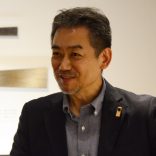 |
| First of all, this is the explanation of the highlight exhibition "East Hiji". It is a small chest that connects two draw boxes on the left and right side, and the outside is a French Sycamore Maple material, which is famous as a violin backboard. It was said that the change was made using a birdeye heather material from Canada, a friend of maple. The shape seems to be asymmetrical. | 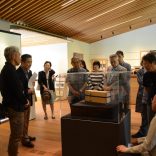 |
| Next, the long Clalo Walnut table "Shakkyo" on display in the center. It is said that he reminiscent of a bridge from the structure of the legs, and named it "Ishibashi", which is said to follow the Pure Land of Bodhisattva. Claro Walnut is a kind of walnut tree planted for food in California, and it is now difficult to obtain, but this table material is made from a giant log that Mr. Suda obtained when he was in his 30s. |
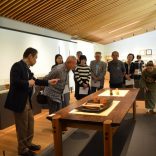 |
| This is the corner of the third generation of the shimonoshi. "Mikurajima Island Kuwakkaku Zushi" by Suda's grandfather, Sogetsu, "Goes Kasuga-type kitchen" by his father, Sosui Suda, and "Obaku Wiu Urushi Kasuga-type Buddha Dan" by Suda are lined up. Along with the modeling of the work, there was an explanation about the mulberry of Mikurajima Island (Mikurajima), which is said to be a famous tree. | 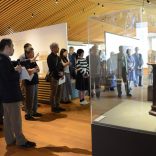 |
| From here, a corner unique to Takenaka Carpentry Tools Museum. This is the backstage of production that introduces wood, finishing materials, tools, gesture techniques, etc. used in finger objects. First of all, he explained the various trees used for Mr. Suda's work while looking at 21 types of tree species samples and valuable logs. |
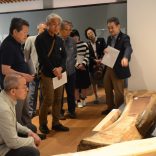 |
| Then there are tools and finishing materials. The leaves of pirates and muku are polished materials for a long time, and even in modern times when sandpaper has become popular, it seems that woodworking is still active. He also explained how he made inlay materials such as shellfish and dyeing angles, including mulberry broth, which he rarely sees. | 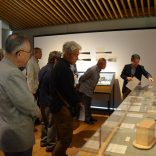 |
| And it is about how to assemble materials used in woodworking art (the gesture). The most basic gesture of a finger is 'Tomegatakashi aritsugi' called 'Uchihozo'. On the other hand, the complex "Mizugumi" looks like a shape called water, so it seems to be a method used for braids in long braids. |
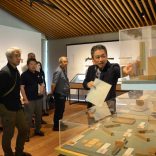 |
|
It was a valuable opportunity to listen directly to the story of living national treasures with about an hour commentary. |
|
Return to the main page |
|